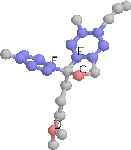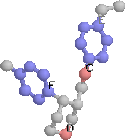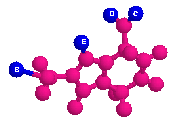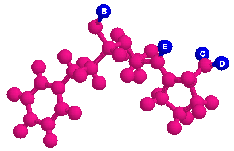

hydrogen_acceptor(A,C) &
hydrogen_acceptor(A,D) &
distance(C,D,4.17) &
hydrophobe(A,E) &
distance(C,E,3.38) &
distance(D,E,7.20) &
hydrophobe(A,F) &
distance(C,F,3.68) &
distance(D,F,5.41) &
distance(E,F,5.0).
C. David Page Jr.
-
Professor
Department of Biostatistics and Medical Informatics
and Department of Computer Sciences
School of Medicine and Public Health
University of Wisconsin-Madison
Wisconsin Institute of Discovery (WID), Room 3174
330 N. Orchard St.
Madison, WI 53715
U.S.A.
Phone: 1-608-316-4687 (direct line)
Email: page@biostat.wisc.edu
-
Teaching
BMI/CS 576: Bioinformatics
CS 731: Advanced Methods in Artificial Intelligence
CS 760: Machine Learning
CS 838: Statistical Relational Learning
Med/BMI 918: Health Informatics
- Research
David Page works on algorithms for data mining and machine learning, and their applications to biomedical data, especially de-identified electronic health records and high-throughput genetic and other molecular data. Of particular interest are machine learning methods for complex multi-relational data (such as electronic health records or molecules as shown) and irregular temporal data, and methods that find causal relationships or produce human-interpretable output (such as the rules for molecular bioactivity shown in green to the side).
-
Recent Work
-
Inductive Logic Programming (ILP) and Statistical Relational Learning (SRL), including applications to clinical data
-
Skewing: Learning Correlation Immune Targets
-
Pharmacophore Discovery for Drug Design
-
Analysis of High-Throughput Genetic Data
-
Other Areas of Bioinformatics and Machine Learning
-
Recent Work


zinc_binding_site(A,B) &
hydrogen_acceptor(A,C) &
distance(B,C,6.1) &
hydrogen_acceptor(A,D) &
distance(B,D,7.3) &
distance(C,D,2.2) &
hydrogen_acceptor(A,E) &
distance(B,E,3.9) &
distance(C,E,3.2) &
distance(D,E,4.0).